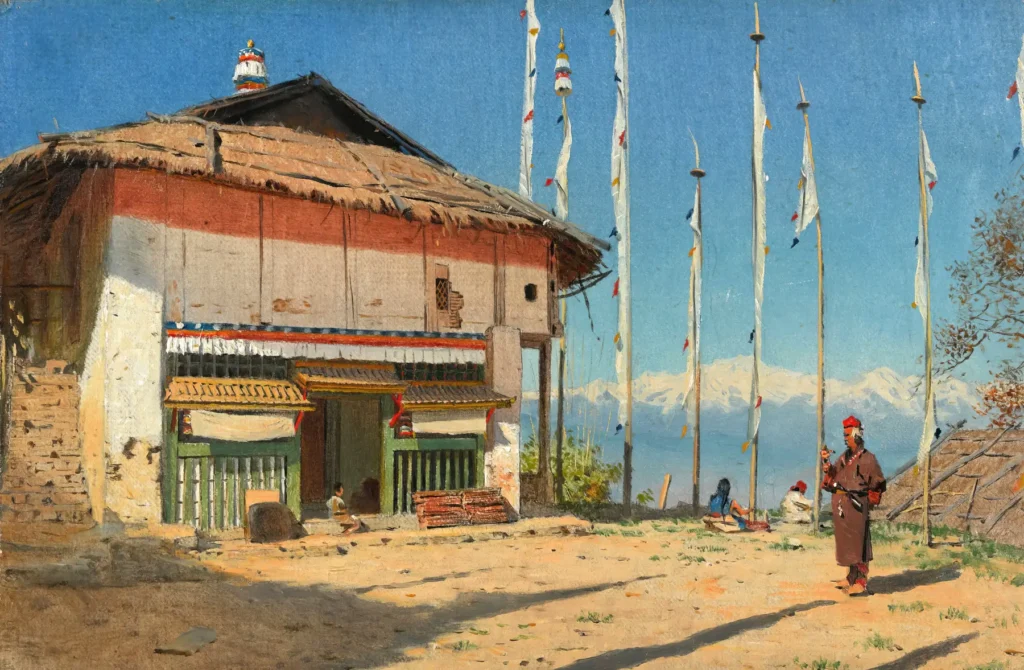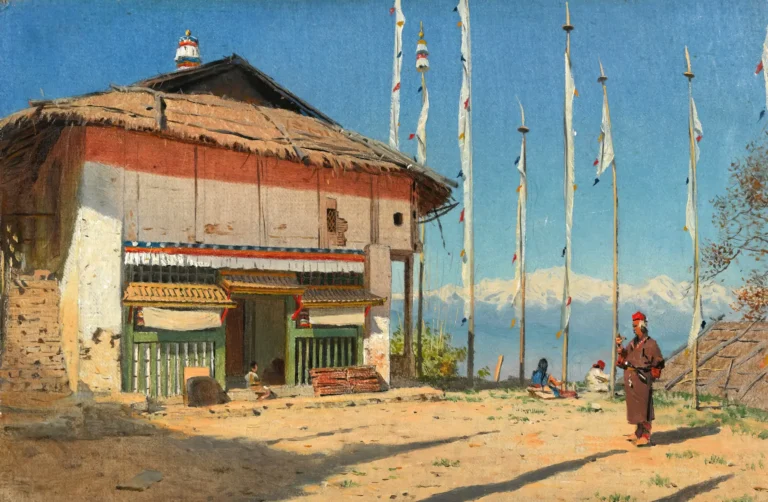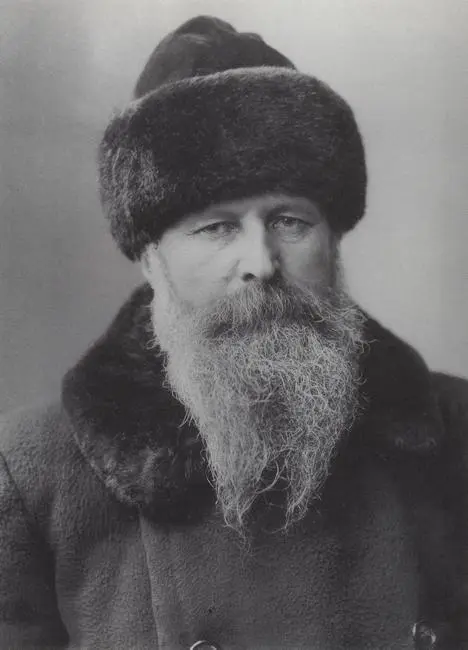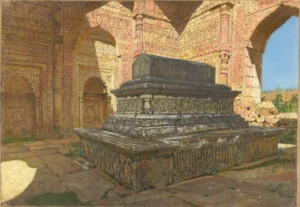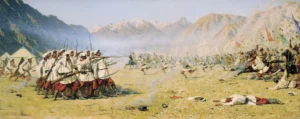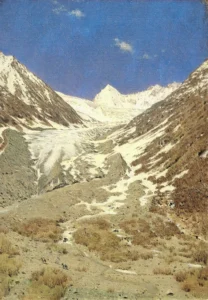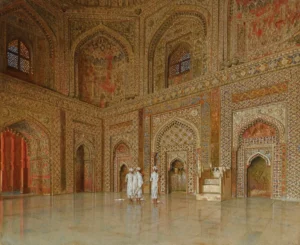Buddhist Temple in Darjiling, Sikkim (1874)
Created in 1874 by Vasily Vereshchagin, 'Buddhist Temple in Darjeeling, Sikkim' is a remarkable exploration of a Buddhist temple situated in the culturally rich region of Sikkim. Showcasing the Realism style, the painting meticulously portrays the temple's architectural details set against the backdrop of the unique landscape. Vereshchagin’s travels greatly influenced this work, as he sought to encapsulate the essence of various cultures and religions. The painting is currently displayed at the State Tretyakov Picture Gallery in Moscow, reflecting Vereshchagin's deep appreciation for the places he explored.
1874 - 1876
About the Artwork
Did You Know
Liked what you see? Add it to your collection.
Enjoyed reading? Share it.
... continued
Artist and Period
Vasily Vereshchagin, a Russian artist, painted this work between 1874 and 1876.
Location and Subject
The painting depicts a Buddhist temple located in Darjeeling, which is in the region of Sikkim. This area is known for its rich cultural and religious heritage.
Style
The artwork is characterized by the Realism style, which was a dominant artistic movement during the 19th century, emphasizing accurate and detailed representations of everyday life and environments.
Current Location
The painting is housed at the State Tretyakov Picture Gallery in Moscow, Russia.
Historical Context
Vereshchagin was known for his travels and his interest in capturing the cultures and landscapes of various regions, including India and its surrounding areas. This painting reflects his fascination with the architectural and religious aspects of the places he visited.




